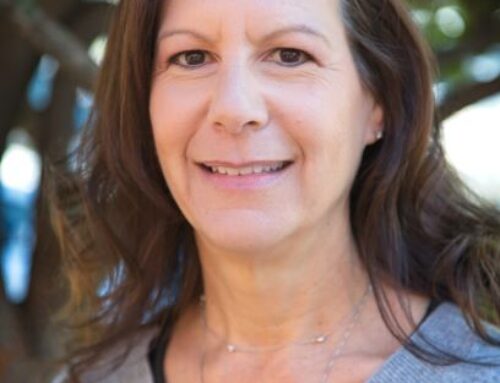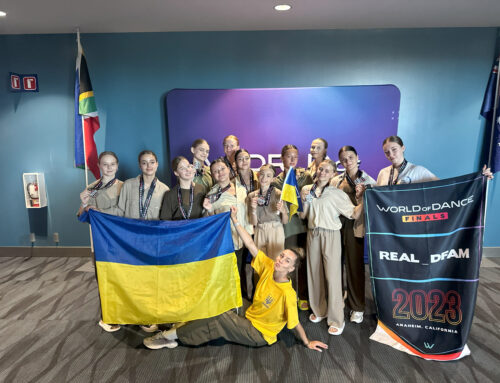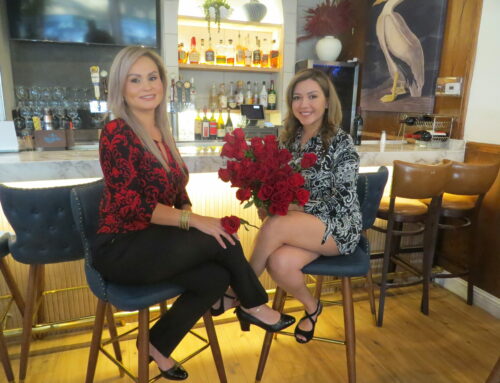Teacher Justin Barbettini seeking partnerships to obtain much needed resources to enhance instruction
Published in the June 21 – July 4, 2017 of Morgan Hill Life
By Benjamin Siepak

Photo by Justin Barbettini
From left, Flori Sermersheim, Renee Apelo and Abel Talavera get ready to checkout at Safeway during a visit to practice grocery shopping.
After serving 10 years in the U.S. Air Force, Justin Barbettini found a new career in the Morgan Hill Unified School District. He now serves as the head of post-secondary special education at Central High School. The life skills instructional program transitions young adults 18 to 22 with special needs into the community and on to their lives.
“We go out in the community and work jobs where I job-coach the students and teach them skills that will translate into actual positions that they can get,” Barbettini said.
These jobs are funded through the WorkAbility Program, which is sponsored by the Department of Rehabilitation. The students are paid for their hours. The emphasis of the program is not curriculum-based. Instead, it focuses on getting students out into the community to get a real-world practice of the skills they need to live independently.
“Being a community-based instruction, we are out there 90 percent of the time,” Barbettini said. “Ten percent is spent in the classroom, and that’s a pretty appropriate instruction for these individuals who are transitioning out to deal with real world situations.”
Grocery shopping, budget planning, cleaning and independent transportation are some of the various skills Barbettini teaches them.

Photo courtesy Justin Barbettini
The group of students stands in front of the downtown Morgan Hill Pop-up Park mural.
Each student has their own set of goals and criteria to accomplish before transitioning. These are determined by Barbettini, the parents of the student and any outside case managers. Some students might focus more on developing technological skills, others focus more on domestic skills.
They take trips to Safeway using public transportation to practice their skills. Throughout the school year, they host fundraisers such as Valentine’s candy grams and green-colored popcorn sales on St. Patrick’s Day.
The money pays for trips they take on leisure time. Some include visiting The Tech Museum, San Jose’s Japantown and CineLux movie theaters.
In the process of transitioning out of the WorkAbility program, some students plan to join the adaptive program at Gavilan College. One of them is 20-year-old Renee Apelo.
“I want to learn about art, and animation — which is possibly another subcategory of art,” she said.
The program is divided up into four quadrants. The first is for students 18 and 19 years old. During this period they get initial assessments to give the teacher a baseline understanding of where they’re at and where they want to be by the end of the program.
At ages 19 and 20, they start to really work on their skills and a path to achieve the goals created in the first year. In the third quadrant at ages 20 and 21, they begin to incorporate some serious transition goals and focus. If the student is looking to transfer to a college, they begin building that relationship with the school and implementing a transition plan. The final year of the program focuses on getting those skills mastered and making the transition.
“It’s all just based off repetition,” Barbettini said. “That’s the most important thing in special education — having these things repeat themselves, so the more we can do it the more comfortable they can get with it.”
The program has faced challenges finding a teacher to stick around. It has seen four different teachers in the first three years.
Barbettini feels at home at Central and has a vision of growth and prosperity for the program’s near future. Still, the lack of necessary resources and a limited budget pose some major concerns for the program.
Barbettini stays persistent in requesting appliances and program needs to the school district, but hasn’t had any luck. For example, the classroom is not equipped with hot running water, a necessity in teaching independent living.
“I think the future of the program would be best suited to have the right equipment to provide the different type of independent living practice that we want to provide,” Barbettini said. “I’d really like to see a studio apartment set-up — the full kitchen, a bathroom and a bed. I want to teach them how to make that bed, clean out the tub, go through the sink and wash dishes.”
After speaking with leaders of the special education program at Calero High School in San Jose, Barbettini was intrigued by the suggestion of looking for outside opportunities to collaborate with. He hopes his requests will open up the door to the community allowing them to use facilities such as small kitchens, washers and dryers to give them the practice and repetition that they get in the classroom.
The response of the community has been favorable, partly due to their recent community involvement. For example, Barbettini and his students donated to the evacuees of the Loma Fire.
“The community has been really supportive,” he said.






